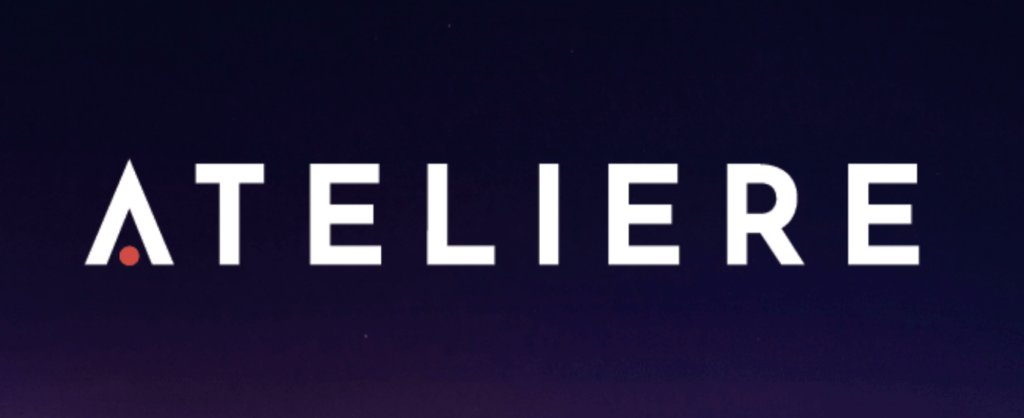M+E Daily

MESA Q&A: Ateliere CEO Explores the Latest Streaming Trends
Story Highlights
Cloud-native media supply chain company Ateliere Creative Technologies kicked off 2024 with a couple of significant announcements.
First, the company said Jan. 23 that it entered into a landmark five-year Strategic Collaboration Agreement (SCA) with Amazon Web Services (AWS) with the goal of redefining media production and distribution, offering innovative cloud-based solutions for the and media entertainment industry from the initial stages of capture via the business-to-business (B2B) supply chain right through to content delivery to consumers.
Then, on Feb. 1, Ateliere announced that it released the definitive guide to a successful media supply chain cloud migration for the media and entertainment industry. “Modern Media Supply Chain Made Easy: A Practical Guide for Cloud Migration” is a meticulously crafted resource for media businesses considering transitioning to a cloud-native media supply chain.
 The Ateliere suite of Software-as-a-Service (SaaS) solutions incorporates cutting-edge workflows and formats to make the vision for a studio in the cloud a reality. The nucleus of the Ateliere platform, Ateliere Connect, delivers core competencies in IMF, parallel scaling, and geographically distributed workflows. Ateliere was started by a team of experts with decades of combined experience at companies including Amazon, HBO, Netflix, and Microsoft.
The Ateliere suite of Software-as-a-Service (SaaS) solutions incorporates cutting-edge workflows and formats to make the vision for a studio in the cloud a reality. The nucleus of the Ateliere platform, Ateliere Connect, delivers core competencies in IMF, parallel scaling, and geographically distributed workflows. Ateliere was started by a team of experts with decades of combined experience at companies including Amazon, HBO, Netflix, and Microsoft.
Dan Goman, the CEO and founder of Ateliere, recently discussed some of the key streaming trends he expects for this year and beyond.
MESA: Can you explain why streaming prices have been growing? What year did this start in and why? What is your projection for what will happen in streaming prices this year and beyond, and why?
Goman: The increase in streaming service prices has been driven by various factors, including the high cost of content creation, operating costs, market saturation, and diminishing revenues from traditional cable and broadcast sources. This trend started gaining noticeable momentum within the last 12-24 months, coinciding with Wall Street’s focus on profitability for major streaming platforms.
For the upcoming year and beyond, it’s reasonable to project further increases in streaming prices. This is due to the ongoing industry transition towards more sustainable and profitable business models, as well as the continuous investment in high-quality original content.
The competitive landscape in streaming services is also a significant factor; as more players enter the market, the cost to stand out through exclusive, original content rises, thereby increasing operational costs that are often passed on to consumers.
MESA: Why are streaming bundles helping some companies to succeed and remain competitive? What are the positives of this for consumers? Have there been any specific streaming bundles you can name that have stood out in terms of demand/success?
Goman: Streaming bundles have become a strategic approach for companies to remain competitive by offering a diverse range of content under a single subscription. This not only appeals to a wider audience but also enhances customer retention.
For consumers, bundles offer the convenience of accessing multiple services at a potentially lower combined cost than subscribing to each service individually.
Bundles like the Disney Plus, Hulu, and ESPN Plus package have been particularly successful due to the diverse content they offer, catering to a wide demographic. Content bundles have been around for a long time, but the concept of streaming bundles began gaining significant traction recently, evolving as a response to the fragmentation of the streaming market and the continuing rise in streaming costs. Bundles effectively mirror the cable TV package model but with the flexibility and diversity that modern consumers demand – at least for now.
MESA: How significant would you say video games being offered by streaming services is now and what are your expectations for it this year and beyond? What other companies, if any, are there doing this other than Netflix now? Do you expect more companies to enter that category?
 Goman: The inclusion of video games in streaming services is a growing trend, aiming to expand the value proposition of these platforms. Netflix, for instance, has ventured into this space, recognising the potential to engage a wider audience.
Goman: The inclusion of video games in streaming services is a growing trend, aiming to expand the value proposition of these platforms. Netflix, for instance, has ventured into this space, recognising the potential to engage a wider audience.
This trend is expected to grow, with more companies likely exploring similar integrations to diversify their offerings. As for other companies currently offering or planning to offer gaming, names like Amazon and Apple come to mind, given their existing infrastructure and investment in digital content.
The convergence of gaming and streaming reflects the broader trend of media convergence, where different forms of entertainment are increasingly accessible through unified platforms.
MESA: Why do you think Apple’s Vision Pro, Roku and YouTube TV will likely make linear TV irrelevant and how will they change the entire streaming service structure and why? How long do you think it will take for linear TV to become irrelevant and why?
Goman: These platforms are contributing to the gradual decline of linear TV by offering more flexible, on-demand content consumption. They provide a user-centric approach where viewers have greater control over what, when, and how they watch, as opposed to the scheduled programming of linear TV.
It was thought that the transition away from linear TV would be a gradual process over several years, but recent developments in streaming (most importantly, the new digital sports offering by Fox/WBD/Disney) appear to accelerate that timeline. Live sports was one of the last remaining reasons for consumers to keep paying the cable bill.
The shift is also accelerated by generational changes, as younger viewers who are more accustomed to on-demand viewing become the dominant consumer base.
MESA: What would you say will be the No. 1 biggest challenge for the industry this year and why?
Goman: One of the most significant challenges facing the streaming industry this year is likely the balance between content cost and profitability. As streaming platforms continue to invest heavily in original content to attract and retain subscribers, managing these costs (along with the high cost of operation) while setting competitive subscription prices is a delicate balance.
The industry is also grappling with market saturation, where the sheer number of services has already led to consumer fatigue. As the industry looks internationally for continued growth, navigating the complexities of global content distribution, including varying regional regulations and content preferences, adds another layer of challenge.









